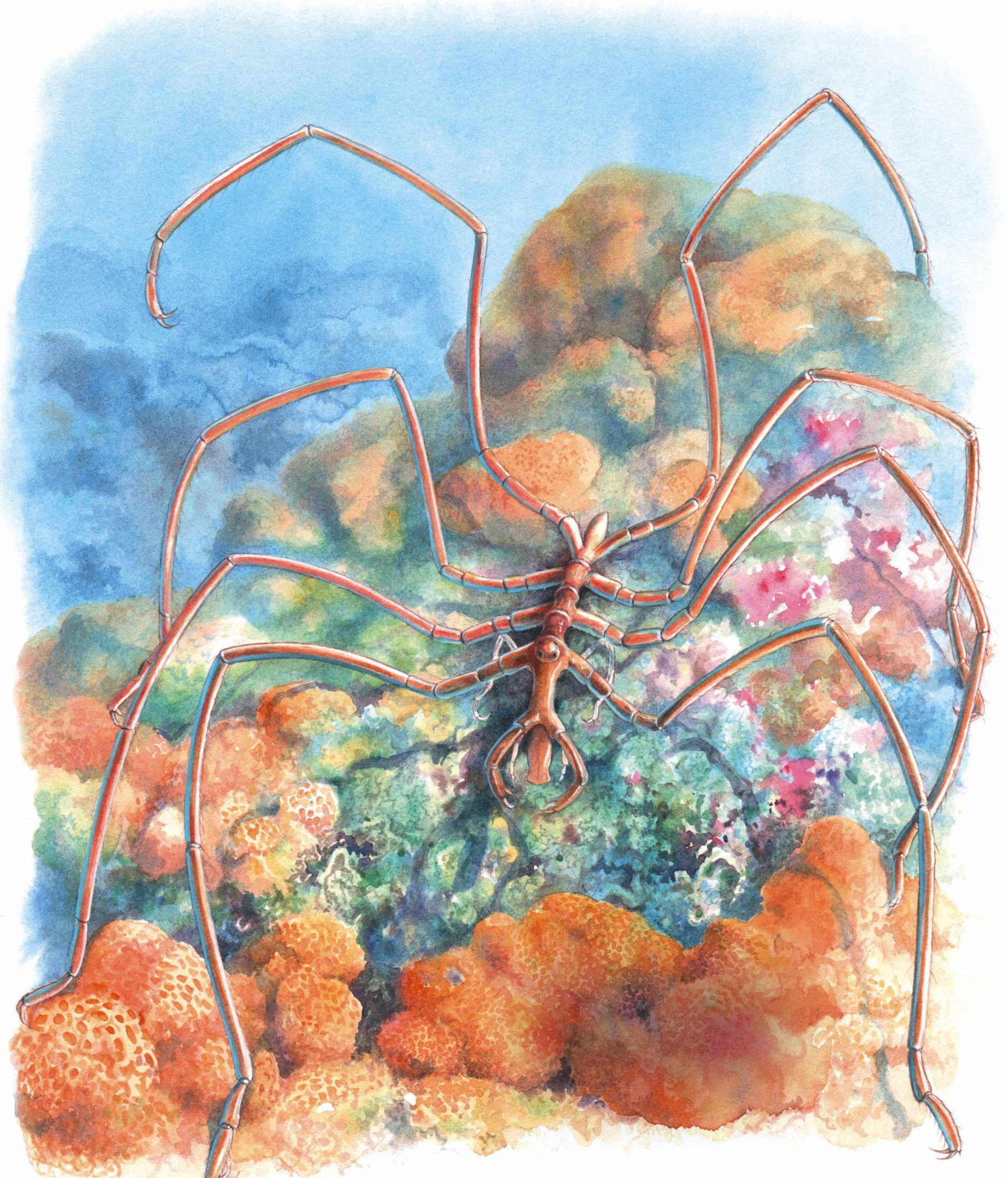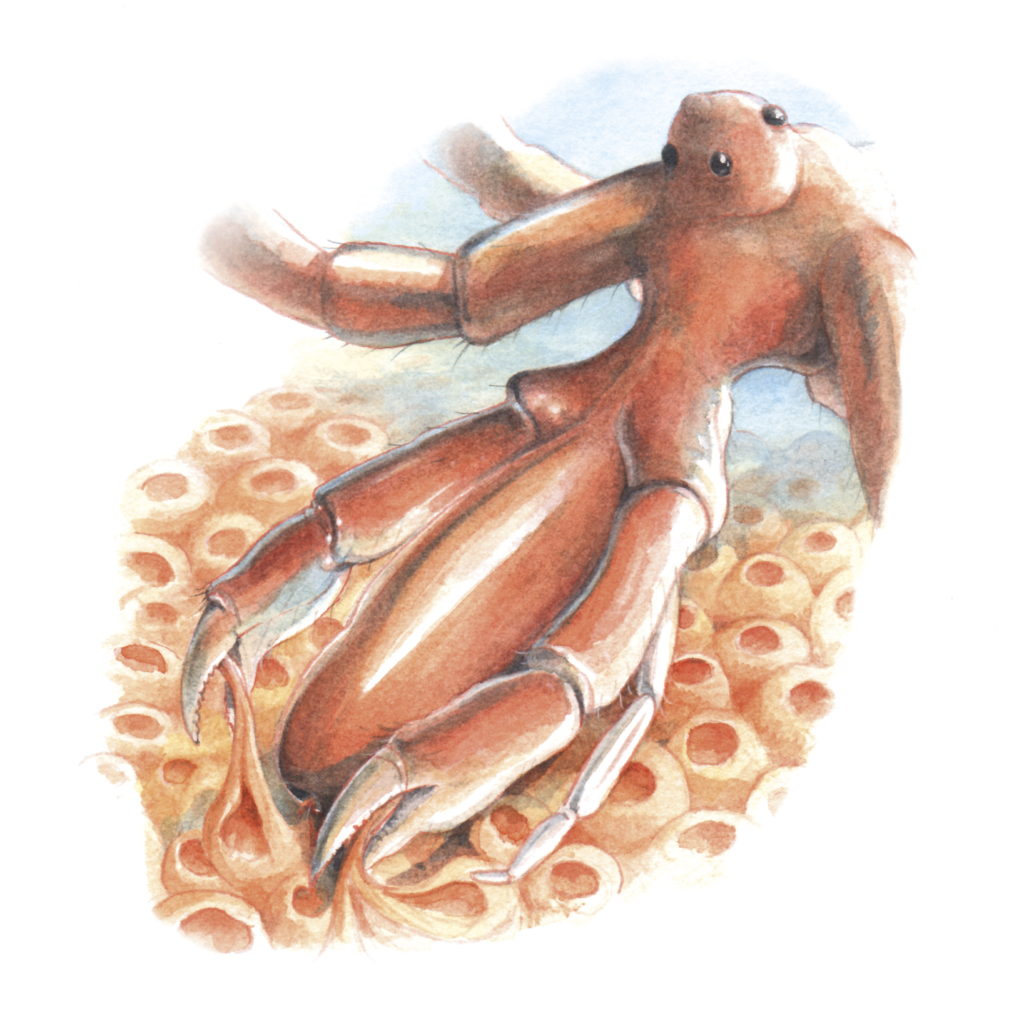
Nick Baker’s Hidden Britain
The popular naturalist, author and TV presenter reveals a secret world of overlooked wildlife
Ain’t nobody
GANGLY LANCER
When it comes to reproducing, eating and breathing, this strange spider-like creature is all legs

A CAREFUL HUNT THROUGH AND AROUND the algae, silt and rocks in a rockpool may turn up a very strange creature indeed. Looking a bit like a child’s crude attempt at modelling a spider from a bunch of pipe cleaners, this is an odd animal discovery that doesn’t initially make much sense.
It belongs to a group of animals referred to as sea spiders, but while it has eight legs and looks superficially like a spider, that is where the similarities end. It doesn’t move like a spider, feed like a spider or indeed live in the places where you might find a spider. Sea spiders’ place in the animal kingdom remains the subject of debate, but current thinking is that they are a group that split off early in the arthropod evolutionary line.
The well-named gangly lancer (Nymphon gracile) is one of about 27 species of sea spider found in the waters surrounding the UK. It is widespread and common among the algae on rocky shores all around our coastlines. With a body about 10mm long and four pairs of wiry legs, each three to four times its body length, it is one of the bigger species likely to be encountered.
Having said this, the word ‘body’ might be a little misleading. The great 19th-century marine biologist Phillip H Gosse himself even went as far as describing the sea spider as “Mr Nobody”. When you scrutinise the gangly lancer up close, he’s got a point: they appear to be all legs. Even the alternative name for their phylum is Pantopoda, which translates as ‘all legs’, while the more often used name for their class, Pycnogonida, means ‘with many knees’ referring to the large number of leg joints. The legs of the sea spider clearly defines it.
The body, if it can be said to have one, comprises of minimal bulk; it is more of a collection of hinges and joints that allow limbs to flex and animate. There is so little space inside the main trunk that many of the sea spider’s internal organs – associated with reproduction, gaseous exchange and digestion – squeeze out and into its leg cavities. Inside the legs can be found the diverticula of the digestive tract, the testes of the males or the ovaries of females, and in gravid females the eggs can be seen through the thin cuticle at certain times of the year. Breathing is also carried out in the leg department.
“Each wiry leg is three to four times its body length”
The eight fibre-thin legs of the sea spider are used for walking, but in this particular species they can also be used to actively paddle through open water – when it is called a ‘dancing lancer’. It is this swimming habit that makes it one of the species most likely to be encountered.
These marine arthropods also have three more pairs of appendages: sensory palps called chelifore that work and perform as antennae, ending in tiny pincers that are used to manipulate food and hang onto mates or substrate.
And then there are a pair of ‘ovigers’ – legs unique to sea spiders. The ovigers have comb-like bristles for cleaning. In males they are better developed because in springtime, after breeding in deeper waters, they carry their precious cargo of fertilised eggs on them, like a cheerleader carrying pom-poms, to the intertidal zone. Males guard, clean and aerate the developing eggs, and later the early-stage juveniles, known as protonymphons.
Sea spiders rely on the squishing of the gut in each of its legs to circulate blood and oxygen around its body – their hearts are too weak.
LOOK CLOSER

Die another day
Sea spider prey consists of soft-bodied creatures such as hydroids, anemones and bryozoans, which are slowly grazed using the chelifores to snip up sections of tissue. These are then sucked up and filtered out via the sea spider’s bulbous proboscis, located in the middle of its head and terminating in a set of jaws. In many cases, sea spiders don’t kill their prey, rather just nibble at it, meaning their prey lives to see another day.